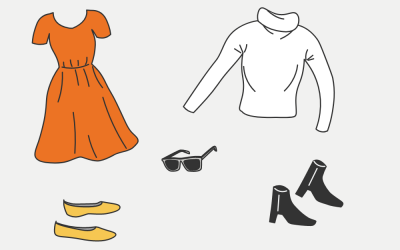3 Ways to use 的 (de) in Chinese Language
Today we are giving beginners and elementary Chinese learners a mini-lecture on 3 ways to use 的 (de) in Chinese language. Well, if you think “的(de)” is only needed to form possessive pronouns like “my” and “your”, I’m afraid you underestimated the “ability” of this character. For instance, “的(de)” serves as an inalienable part of some grammatical structures. In this article, we will explain 3 important structures with the use of “的(de)” in details.
1. Pronoun + 的(de)

In Chinese, “pronoun + 的(de)” forms a possessive pronoun, such as “my”, “his”, etc. Therefore:
我的(wǒ de) = my, 你的(nǐ de) = your (singular), 他的(tā de) = his, 她的(tā de) = her, 我们的(wǒmen de) = our, 你们的(nǐmen de) = your (plural), 他们的(tāmen de) = their, Mike的(de) = Mike’s
Examples:
Example 1: 这是我的书。(Zhè shì wǒ de shū.) = This is my book.
Example 2: 她是你的老师。(Tā shì nǐ de lǎoshī.) = She is your teacher.
2. Adj. + 的(de) + noun

This structure is commonly used to describe an item or a person’s features. The important thing here is the use of “的(de)” in this structure:
If the adjective only contains one character, “的(de)” can be skipped. However, it is compulsory to use “的(de)” if the adjective consists of two or more characters.
Examples:
Example 1: 昨天我买了一些新衣服。(Zuótiān wǒ mǎile yīxiē xīn yīfú.) = I bought some new clothes yesterday.
(新(xīn) = new, which works as the adjective, 衣服 (yīfu) = clothes, which works as the noun in this structure. The Chinese word for “new” only contains one character, therefore, the use of “的(de)” is optional)
Example 2: 中国有很多漂亮的城市。(Zhōngguó yǒu hěnduō piàoliang de chéngshì.) = There are many beautiful cities in China.
(漂亮 (piàoliang) = beautiful, which serves as the adjective, 城市 (chéngshì) = city, which serves as the noun in this structure. The Chinese word for “beautiful” consists of two characters, therefore, “的(de)” cannot be skipped)
3. Verb + 的(de)

Verb + 的(de) is a way to form the past tense. In comparison with “verb + 了(le)”, which is also a typical structure referring to the past tense, “verb + 的(de)” has an implicit function of putting emphasis on a certain fact. A similar structure to this would be “是(shì) + verb (or a phrase) + 的(de)”, which is used when you want to make something more important than the other elements of a sentence.
Examples:
Example 1: 你什么时候看的这个电影? (Nǐ shénme shíhòu kàn de zhège diànyǐng?) = When did you watch this movie?
Example 2: 我是坐飞机来上海的。(Wǒ shì zuò fēijī lái shànghǎi de.) = I came to Shanghai by plane.
Can you make more examples with each way of using 的?
「You can also have a look at our article about 3 Ways to Say “Change” in Chinese」
Leave a comment with your answer below – or tweet us at @thatsmandarin!









0 Comments